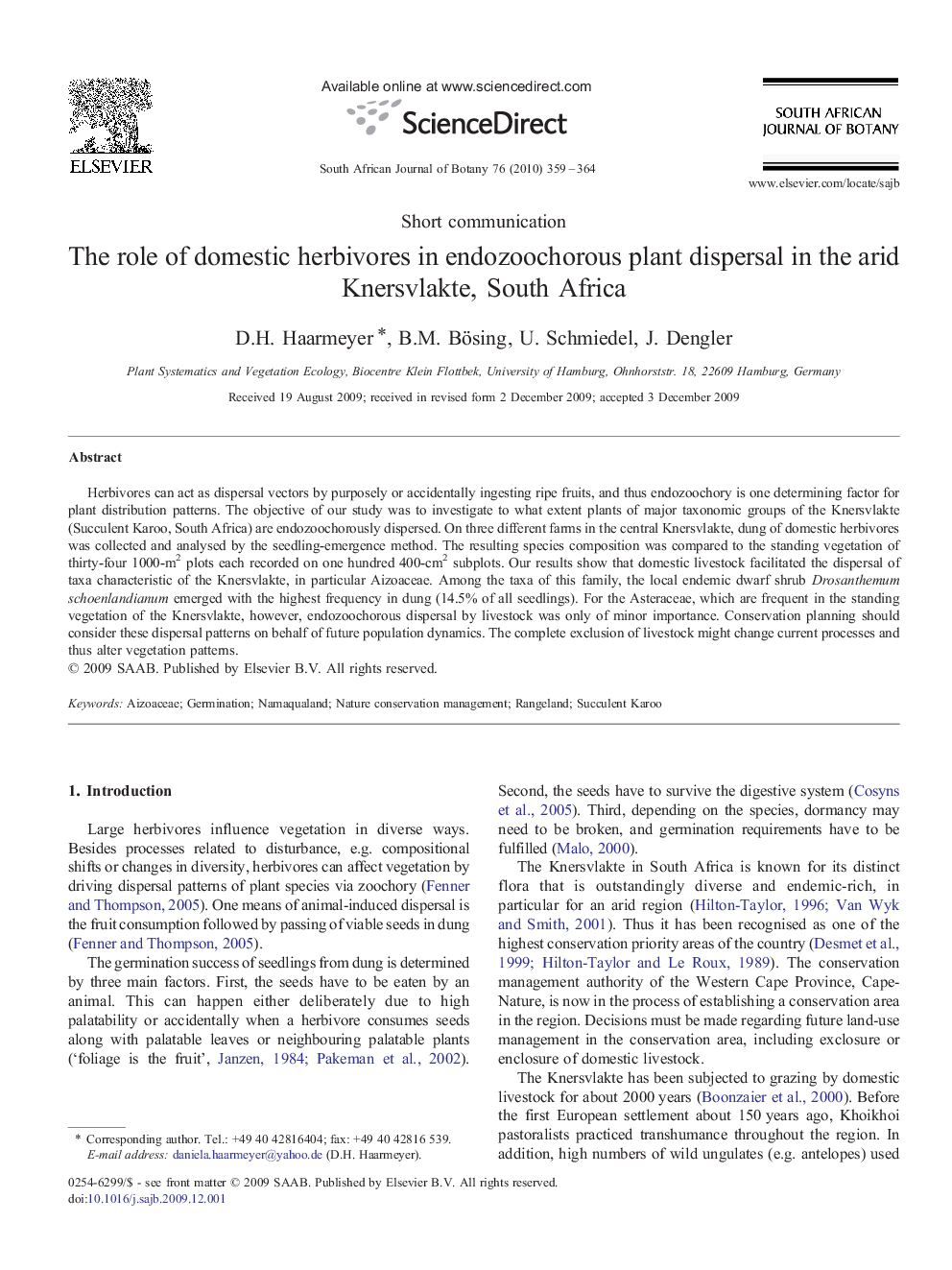| Article ID | Journal | Published Year | Pages | File Type |
|---|---|---|---|---|
| 4521296 | South African Journal of Botany | 2010 | 6 Pages |
Abstract
Herbivores can act as dispersal vectors by purposely or accidentally ingesting ripe fruits, and thus endozoochory is one determining factor for plant distribution patterns. The objective of our study was to investigate to what extent plants of major taxonomic groups of the Knersvlakte (Succulent Karoo, South Africa) are endozoochorously dispersed. On three different farms in the central Knersvlakte, dung of domestic herbivores was collected and analysed by the seedling-emergence method. The resulting species composition was compared to the standing vegetation of thirty-four 1000-m2 plots each recorded on one hundred 400-cm2 subplots. Our results show that domestic livestock facilitated the dispersal of taxa characteristic of the Knersvlakte, in particular Aizoaceae. Among the taxa of this family, the local endemic dwarf shrub Drosanthemum schoenlandianum emerged with the highest frequency in dung (14.5% of all seedlings). For the Asteraceae, which are frequent in the standing vegetation of the Knersvlakte, however, endozoochorous dispersal by livestock was only of minor importance. Conservation planning should consider these dispersal patterns on behalf of future population dynamics. The complete exclusion of livestock might change current processes and thus alter vegetation patterns.
Related Topics
Life Sciences
Agricultural and Biological Sciences
Agronomy and Crop Science
Authors
D.H. Haarmeyer, B.M. Bösing, U. Schmiedel, J. Dengler,
